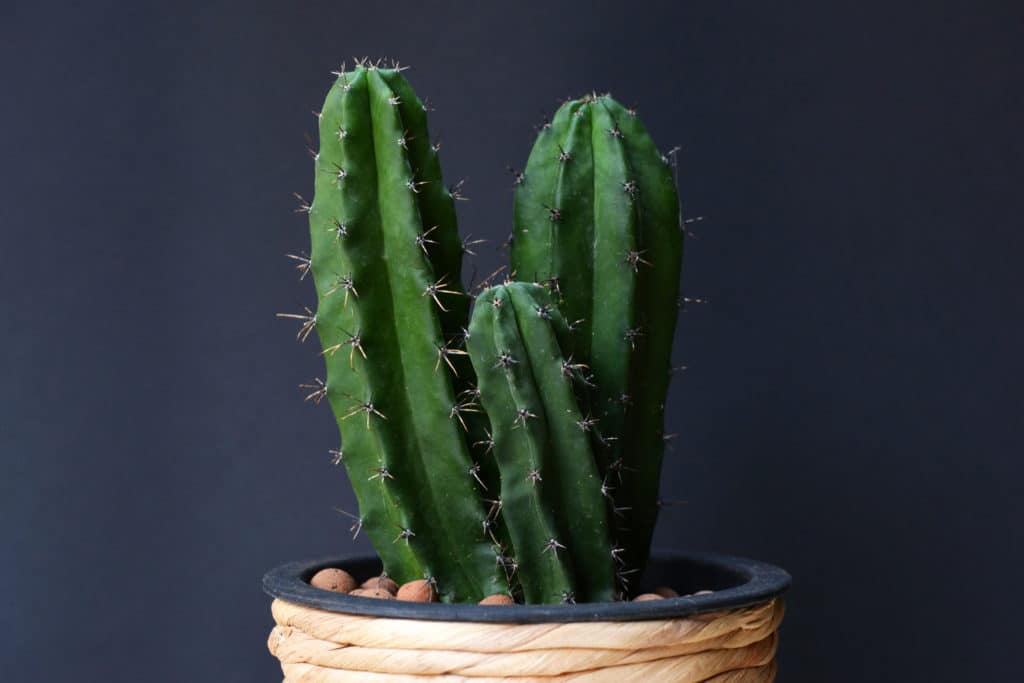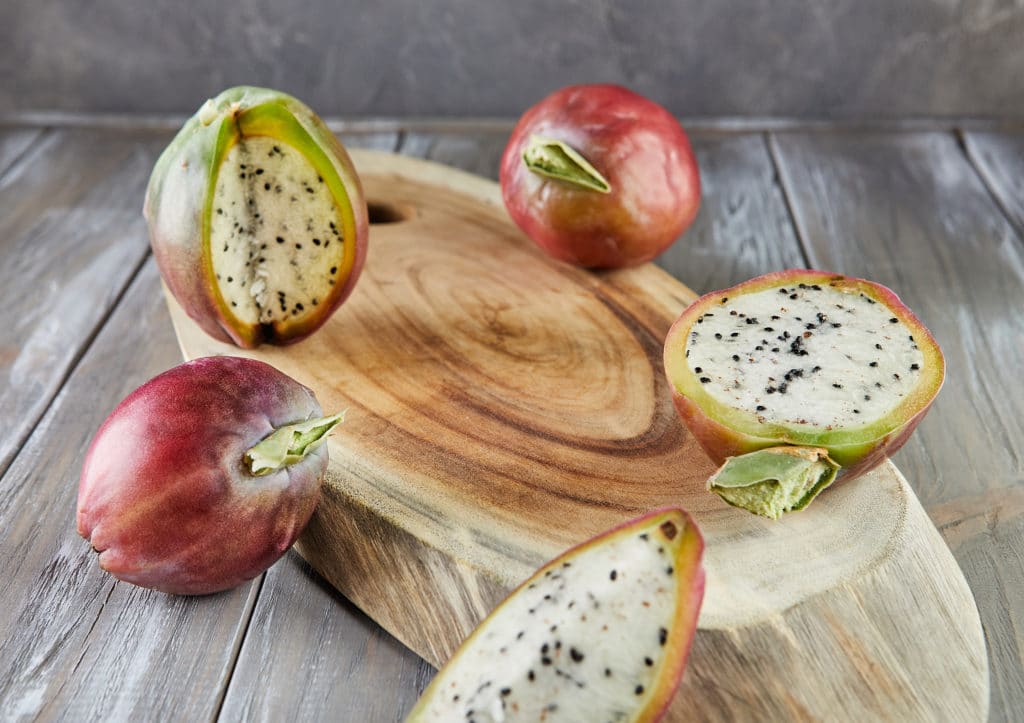
If you love plants and have a green thumb, any cactus can be an excellent addition to your indoor or outdoor garden. Cacti have a distinct look to them with a certain appeal that many people simply love.
Most people know that cactus can be eaten in times of need. But did you know some cacti actually grow edible fruit that can be enjoyed time and again without harming the plant? One such popular species is the Peruvian Apple Cactus.
The Peruvian Apple Cactus is an iconic thorny columnar cactus. Growing tall and thin as it does, it features four fin-like structures along the length of the trunk which produce spines about an inch apart along their length.
Of course, this is just a simple description of the Peruvian Apple Cactus and they can grow into quite distinctive shapes as they advance in age and size.
Here, we are going to cover some of the unique traits, such as fruiting, and basic care requirements for the Peruvian Apple Cactus, with some suggestions and tips to help your Apple Cactus (Cereus Peruvianus) remain strong and vital for years.
An In-Depth Look at the Peruvian Apple Cactus (Cereus Peruvianus)
Being native to South America, this species of cacti plant can achieve truly spectacular heights. Its greenish-gray stems can reach as high as ten meters with no care from humans.
However, with the help of clever and ambitious gardeners, they have achieved a record height of 34 meters, which is amazing, to say the least.
Also known as the “night-blooming cereus cactus,” the Peruvian Apple cactus produces large nocturnal flowers that are cream-colored and which open only under the light of the stars.
This is relatively unusual in the plant world. It’s also rather interesting that if viewed from above, the trunk takes on something of a star-like shape. Maybe this cactus and its muse have more in common than one might assume.
This desert plant produces thorn-free fruits known as the Peruvian apple or pitaya. This dragon fruit-looking edible fruit can vary in color from yellow to violet-red. The white meat of the interior of the fruit is edible with crunchy seeds. Many people love the flavors found within these unusual fruits, making this breed of plant highly sought after.
Another variety of Peruvian Apple Cactus is the Monstrose Apple cactus or the “Curiosity Plant.” This mutant variation grows shorter and broader but produces its own delicious edible fruit.
If you happen to have a Peruvian Apple Cactus of the Monstrose variety, care should be similar with consideration to their proportions and light exposure requirements.

Cactus Care: Peruvian Apple
Caring for any cactus is comparatively easy since they evolved in a harsh, dry environment that is inhabited by equally robust creatures. Because it is a cactus, it prefers abundant light. However, they will survive even indoors but be prepared for it to grow much more slowly than it would out of doors.
Temperature & Light
Give your Peruvian Apple as much bright light as you possibly can. No amount of sun exposure is too much. It will lean toward light sources as it grows, which may be a sign that you are not providing it with enough light.
These plants can survive in low light, but they prefer the touch of the sun. You should lookout for a column cactus that is leaning dramatically as it attempts to reach the light since this can result in an unstable plant that may fall over. You certainly don’t want one of these thorny characters to fall on you!
Keep in mind that high temperatures are also preferable for this plant. If you live in a colder region, you may give it plenty of light and wonder why it isn’t thriving.
The answer may be that the temperature isn’t ideal. This very hearty plant will likely survive anything you throw at it, but sub-optimal conditions will slow its growth.
Watering
Not surprisingly, these plants can do well with very little watering. The thick skin and internal anatomy of cacti have developed to make a little water go a long way.
Water your Peruvian Apple Cactus modestly during the early spring and continue doing so through the growing season, which should carry through the summer.
Be sure to let the soil dry almost completely before you water again. This is perhaps the most important thing to keep in mind when caring for any species of cacti.
Soil
These plants require soil that drains well. Most good cactus-mix soils will do nicely. Short of that, you can add sand to just about any type of soil and mix it well for proper aeration.
Fertilizer
Use a slow-release organic granular mix fertilizer during the growing season to give a little boost.
Be ready to repot your Peruvian Apple Cactus after the growing season until you eventually place it in the ground since it can grow rather rapidly.
Training & Pruning
The best time to prune is in the Fall when they are robust but are also exiting the growth season. You may also prune to your preference, within reason, since they are very resilient.
Propagation
Growing these plants from seed is usually the best way to allow them to reproduce. Sections of existing plants will also take root. It is best to place these in a standard potting mix.
Harvesting
Because Peruvian Apple Cacti bloom at night, you might need to pollinate them by hand. Otherwise, they can fail to produce fruit.
If there are other Peruvian apple cacti around, you may not need to pollinate by hand. The presence of bats and moths will also help.
Things to Look Out For
Over-watering: Most of the time, over-watering is fixable. Either water less, or loosen the soil, and/or add sand.
Pests: Mealybugs, slugs, and snails like to dine on this succulent plant and their tasty fruits. Give your cactus regular visual inspections, and evict any invaders. A mild insecticide is unlikely to harm the cactus through its thick, tough exterior.
